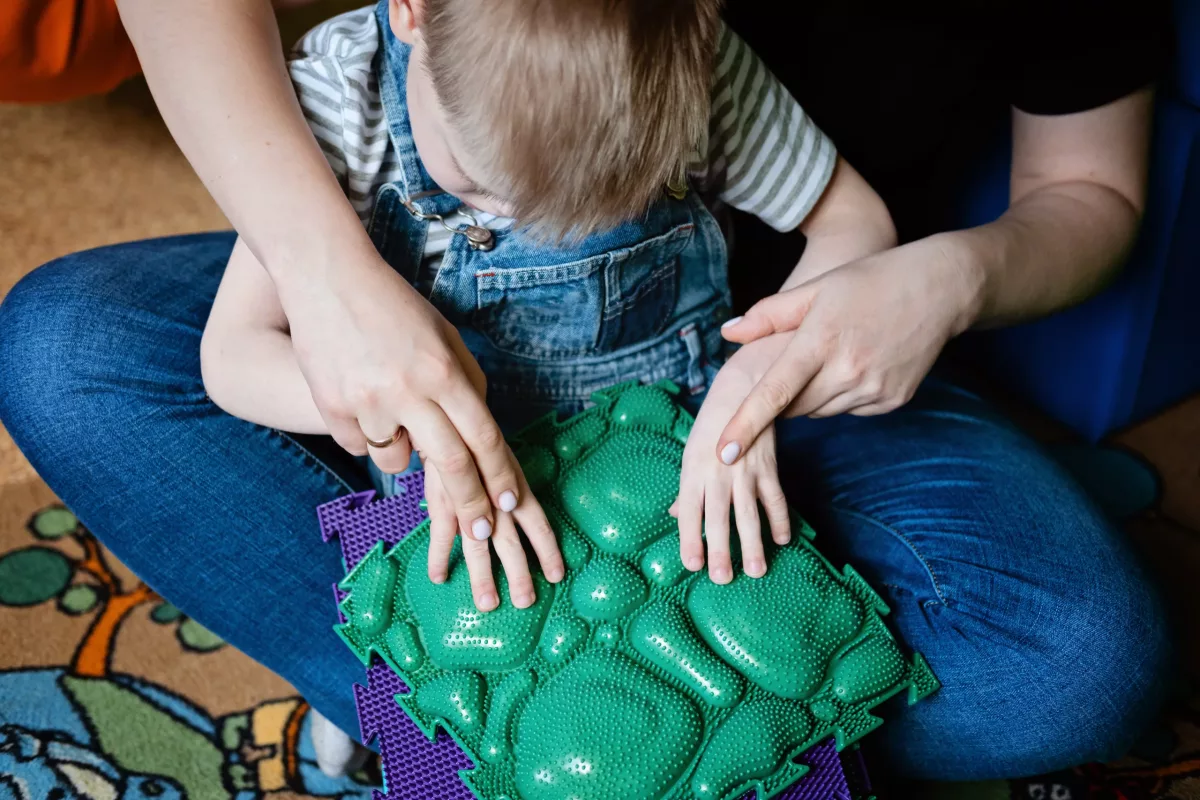A mental disorder that causes a difference in the way your brain processes sensory information is called sensory processing disorder (SPD). In general, there are multiple types of SPD, and some of them can make you under-responsive to certain sensory experiences (such as touch or sounds). People who develop this condition are often referred to occupational therapists to adapt to the sensory problems.
While SPD is mostly found in children, it may affect people during adulthood as well. In most cases, people with neurodevelopmental and neurodivergent problems, such as autism spectrum disorder, attention-deficit/hyperactivity disorder (ADHD), and others. Today, this condition is not an official medical diagnosis, but some healthcare providers recognize the benefits of identifying it. It helps manage the symptoms that negatively affect your daily activities.
According to some research, roughly 1 to 3 out of every 20 people in the U.S suffer from sensory processing disorder. This is especially true for people with neurodevelopmental disorders.
Types
- Sensory over-responsivity (SOR) – This type of SPD causes increased sensitivity to sensory information. In other words, you may respond too much or too soon to sensory information that most people can tolerate.
- Sensory under-responsivity (SUR) – In such cases, people need more sensory information to have an impact. Usually, people with SUR are not aware of sensory information or have a delay before responding.
- Sensory craving (SC) – People who develop this type of SPD need and seek out sensory information for stimulation. However, stimulation results in disorganization, which does not satisfy the craving.
- Sensory discrimination disorder – This type of disorder makes it difficult to understand things you hear.
- Postural disorder – If you develop this type of SPD, it may become difficult to perceive the body’s position in space. As a result, you may have movement problems.
- Dyspraxia – This type causes multiple problems with movement and coordination. Usually, it negatively affects the gross and fine motor skills.
Symptoms
People usually experience different symptoms because it depends on several factors. For example, the type and severity of SPD, age, overall health, and preferences. Check below the most common symptoms:
- Clumsiness (bumping into things regularly)
- Discomfort in certain types of clothing and fabric
- Gagging when eating foods with specific textures
- Continuous need to touch things
- Inability to recognize personal space
- Difficulty using fine motor skills
- Reacting to sudden movements, loud noises, bright lights, or touches
Generally, this mental disorder may negatively affect one or multiple senses and vary in intensity. Do not hesitate to see a doctor if any of the previous symptoms occur.
Causes
Nowadays, healthcare providers do not fully understand why this condition occurs. Some studies have shown that genetics and some environmental factors could play a role. However, more research is needed.
Risk Factors
While doctors cannot determine what exactly causes SPD, they have identified a strong link between this disorder and neurodivergence, other mental health conditions, and others. Check below for some factors that could increase your risk of developing sensory processing disorder:
- Obsessive-compulsive disorder (OCD)
- Schizophrenia
- Specific learning disorders
- Developmental delays
- Bipolar disorder
- Attention-deficit/hyperactivity disorder (ADHD)
- Autism spectrum disorder (ASD)
- Disruptive mood dysregulation disorder (DMDD)
Moreover, some people may develop SPD without any of the previous risk factors.
What Happens if Sensory Processing Disorder is Left Untreated?
Those who develop SPD may also experience some complications, especially if the condition is not diagnosed. Check below some examples:
- Social and emotional difficulties (such as low self-esteem, isolation, and others)
- Occupational and behavioral problems (including aggression, tantrums, and relationship problems)
- Mental health problems (such as anxiety, depression, and others)
- Sensory overload that may lead to irritability
This document does not contain a complete list of SPD complications. In any case, you can consult with your healthcare professional about ways to prevent previous complications.
Diagnosis
This condition is usually difficult to diagnose because there are no precise diagnostic criteria. However, physicians recognize it. If you notice that your child’s sensory behaviors are not typical, it is recommended to see a pediatrician. Furthermore, people with SPD are often referred to occupational therapists. They may ask some questions about the symptoms and evaluate medical history to get more clues about the disease.
Treatment
While there is no way to cure this disorder, occupational therapists often recommend treatments to improve self-care activities, social skills, and self-regulation behavior. Moreover, these healthcare professionals may also recommend other therapies to lessen the symptoms and cope with sensory challenges.
Sensory Integration Therapy
This therapy is one of the most effective treatments for individuals with sensory processing disorder, helping them learn techniques to adapt to their condition. Typically, it involves sensory activities that help control their sensory responses. Furthermore, sensory integration therapy also improves concentration and reduces anxiety, according to some studies.
Routine Sensory Activities
This treatment is often recommended along with sensory integration therapy for school-age children. It involves routine sensory activities and tools at home and school. Thus, these activities help the child stay focused and organized during the day.
Occupational Therapy
This therapy is often used for fine and gross motor skills. It is often effective in children with dyspraxia and postural disorders. During occupational therapy, healthcare specialists will work to improve your child’s fine motor skills (including handwriting, fastening buttons, and using scissors). It also may help with gross motor skills such as climbing stairs, throwing a ball, or riding a bike.
Frequently Asked Questions
What can I expect if I have a sensory processing disorder?
In general, this disorder differently affects people. While some of them may have mild symptoms, others may need treatment because the symptoms interfere with their daily routine. If you or your child ignores the symptoms and does not get treatment, it may lead to an increased risk of other health conditions. For example, depression, behavioral issues, social isolation, and others.
Is SPD a form of autism?
No, but these disorders may co-occur. People with SPD often develop autism spectrum disorder (ASD). However, some people may develop SPD only. For more details, discuss it with your physician.
What can be mistaken for sensory processing disorder?
There are some health conditions that can be mistaken for SPD. Check below some of them:
- Autism spectrum disorder (ASD)
- Attention-deficit/hyperactivity disorder (ADHD)
- Anxiety disorders
- Obsessive-compulsive disorder (OCD)
- Developmental delays
- Vision disorders (such as convergence insufficiency)
This article does not contain a full list of conditions that can be mistaken for SPD. Ask your healthcare provider if you have any other questions.




